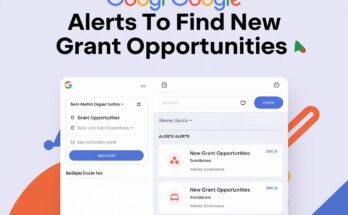In today’s world, understanding nonprofit marketing is essential for any organization aiming to create a positive impact.
But what exactly is nonprofit marketing?
Simply put, it’s the process of promoting a nonprofit’s mission, services, and values to engage supporters, raise awareness, and ultimately drive funding. Unlike traditional marketing, which focuses on profits, nonprofit marketing seeks to connect people with a cause and inspire them to take action.
In this blog post, we will delve deep into the key aspects of nonprofit marketing, exploring various strategies, tools, and examples that can help your organization thrive.
The Purpose of Nonprofit Marketing
The primary purpose of nonprofit marketing is to build relationships and engage your target audience. Unlike traditional businesses that focus on profits, nonprofits aim to generate social impact.
This means that your marketing efforts should emphasize the mission, values, and stories behind your organization. By connecting with your audience on an emotional level, you can inspire them to support your cause.
Key Components of Nonprofit Marketing
- Audience Identification: Understanding your audience is the first step in effective marketing. Who are your potential supporters? What are their interests and values? Conducting audience research through surveys, social media analytics, and community feedback can provide valuable insights.
- Branding: A strong brand helps differentiate your nonprofit from others. It encompasses your logo, messaging, and overall visual identity. Establishing a compelling brand narrative that reflects your mission and values can attract and retain supporters.
- Messaging: Clear and consistent messaging is vital. Use language that resonates with your audience and conveys your mission. Make it personal and relatable. Storytelling is a powerful tool here; share real stories that illustrate the impact of your work.
- Marketing Channels: Nonprofits have access to various marketing channels, including social media, email, blogs, and traditional media. Each channel has its strengths, and leveraging a mix can help maximize your reach.
- Fundraising Strategies: Marketing and fundraising go hand in hand. Creating fundraising campaigns that align with your mission can not only raise funds but also increase awareness about your cause.
Practical Nonprofit Marketing Strategies
Now that we understand the components of nonprofit marketing, let’s explore some practical strategies that can help your organization succeed.
1. Leverage Social Media
Social media platforms are a powerful tool for nonprofits to connect with supporters and share their mission.
Practical Example: A small animal rescue organization uses Instagram to showcase adoptable pets. They share heartwarming stories of rescues and transformations, encouraging followers to adopt or donate. By using relevant hashtags and engaging with their community, they increase their visibility and attract potential adopters.
2. Create Compelling Content
Content marketing involves creating valuable, relevant content to attract and engage your audience. This can include blog posts, videos, infographics, and more.
Practical Example: A nonprofit focused on environmental conservation produces a monthly blog featuring tips for sustainable living. They include practical advice, personal stories from community members, and calls to action for readers to get involved. This content not only raises awareness but also positions the organization as a thought leader in the field.
3. Build an Email List
Email marketing remains one of the most effective ways to engage supporters. By building an email list, nonprofits can communicate directly with their audience.
Practical Example: A nonprofit that provides educational resources to underprivileged children offers a free downloadable guide on their website. In exchange for this resource, visitors provide their email addresses. The nonprofit then sends regular newsletters with updates, success stories, and opportunities to get involved, keeping supporters engaged and informed.
4. Utilize Storytelling
Storytelling is at the heart of effective nonprofit marketing. Sharing personal stories helps humanize your mission and connect emotionally with your audience.
Story Example: Imagine a small nonprofit that works with homeless families. They feature a family in their marketing materials, sharing their journey from homelessness to stability. The story highlights the challenges they faced and how the nonprofit’s support made a difference in their lives. By showcasing real people and their experiences, the organization fosters empathy and encourages donations.
5. Collaborate with Influencers
Partnering with influencers can help amplify your message and reach new audiences. Find individuals or organizations that align with your mission.
Practical Example: A nonprofit focused on mental health awareness partners with a popular mental health advocate on social media. They collaborate on a campaign that encourages open conversations about mental health and promotes available resources. The influencer shares the campaign with their followers, increasing the nonprofit’s visibility and credibility.
6. Host Events
Events provide an excellent opportunity for nonprofits to connect with their community and raise funds. Whether in-person or virtual, events can be a powerful marketing tool.
Practical Example: A nonprofit organizing a charity run uses social media and email marketing to promote the event. Participants register online and fundraise leading up to the run. During the event, the nonprofit shares stories of beneficiaries, creating a memorable experience that encourages attendees to donate.
7. Optimize Your Website
Your website is often the first point of contact for potential supporters. Ensure it is user-friendly, visually appealing, and optimized for mobile devices.
Practical Example: A nonprofit’s website includes a clear mission statement, compelling visuals, and easy navigation. It features a donation button prominently on every page, making it simple for visitors to contribute. Regularly updating the website with fresh content helps improve search engine visibility and keeps supporters engaged.
The Importance of Measurement and Evaluation
Just like any marketing effort, it’s essential to measure the effectiveness of your nonprofit marketing strategies. Analyzing data helps identify what works and what needs improvement.
Key Performance Indicators (KPIs)
- Website Traffic: Monitor how many visitors are coming to your website and which pages are most popular.
- Social Media Engagement: Track likes, shares, comments, and follower growth to gauge your reach and influence.
- Email Open and Click Rates: Analyze how many people are opening your emails and clicking on links to determine engagement levels.
- Donation Growth: Measure the increase in donations during specific campaigns to assess their impact.
By continually evaluating your efforts, you can refine your marketing strategies for better results.
Taking Action for Your Nonprofit
As we’ve explored, nonprofit marketing is a multifaceted approach that requires creativity, strategy, and a genuine connection with your audience. By leveraging social media, creating compelling content, and utilizing storytelling, your organization can effectively promote its mission and drive meaningful change.
Remember, nonprofit marketing is not just about raising funds; it’s about building relationships and inspiring action. The more you engage with your community, the stronger your support network will become.
Call to Action
Ready to take your nonprofit marketing to the next level?
Subscribe now to the Nonprofit Navigators Newsletter and start receiving invaluable insights, resources, and opportunities tailored just for you!
Join our community to access job opportunities, grant opportunities, exclusive webinars, and events that can help your organization thrive. Together, we can make a greater impact in the world!
Don’t miss out on the chance to connect with a network of like-minded individuals dedicated to making a difference.
Additional Resources:
- The Small Business’s Guide to Winning Grants
- Request for Proposal Success: How to Write Proposals That Win
- The Ultimate Guide to Federal Grant Applications: Techniques for Success
- Digital Marketing for Nonprofits: A Comprehensive Guide to Boosting Your Impact Online
- Mastering Online Fundraising: A Nonprofit’s Guide to Digital Success




